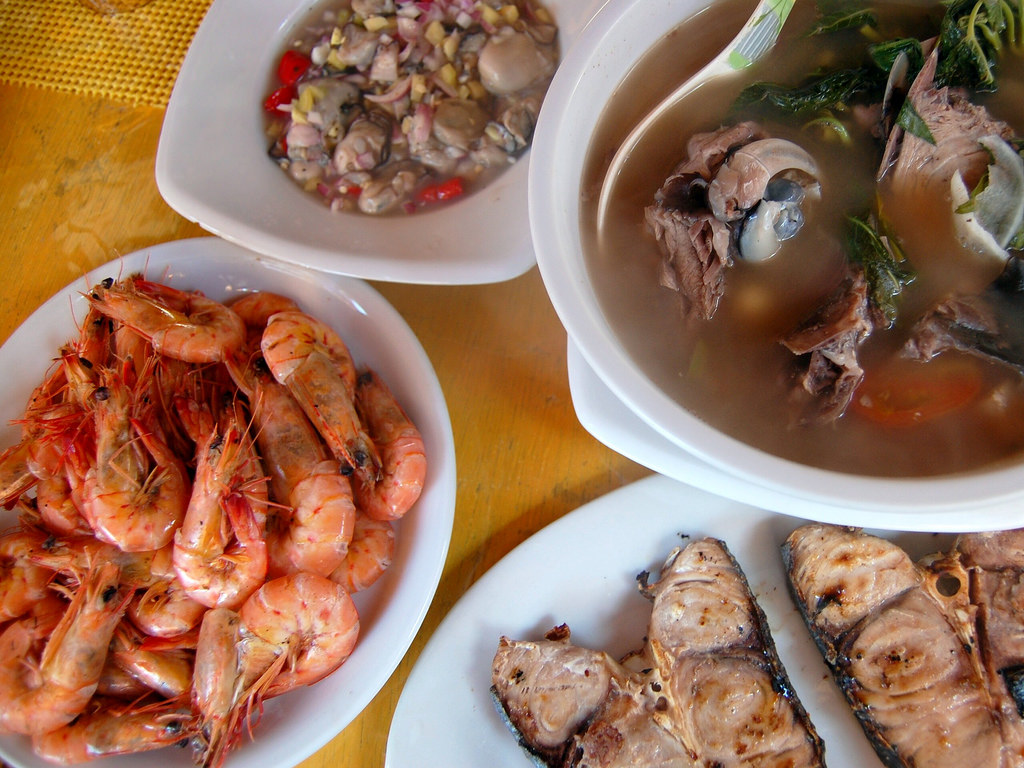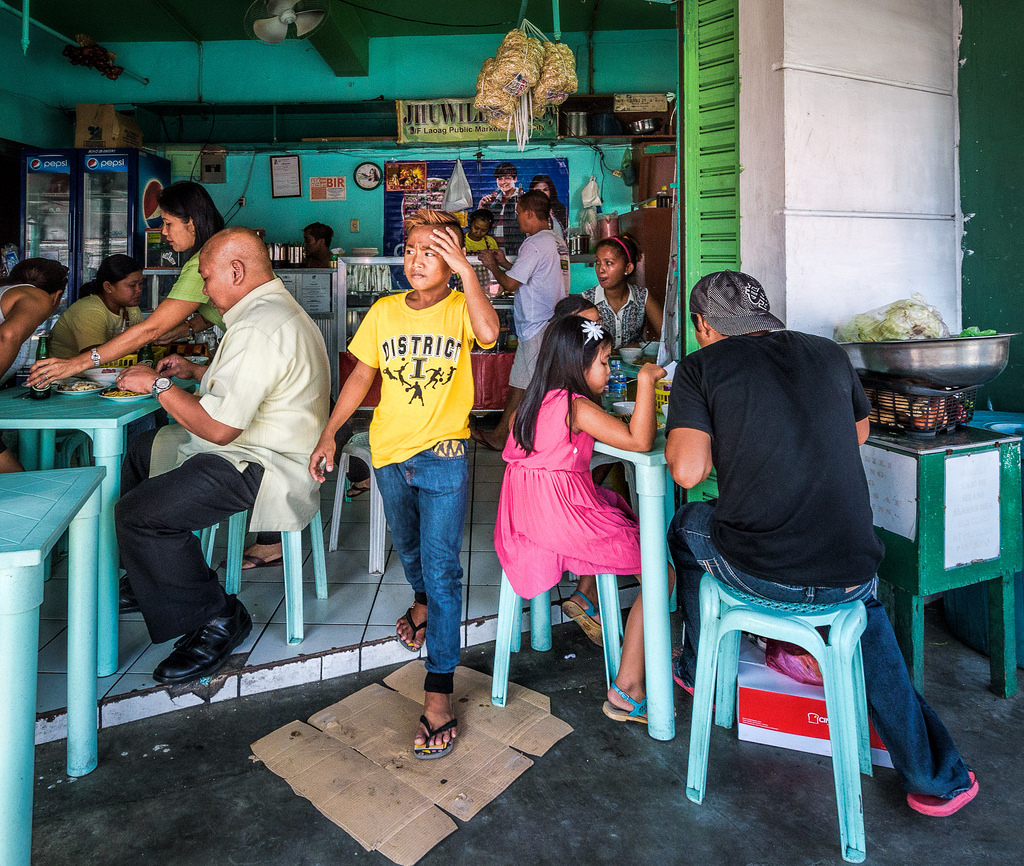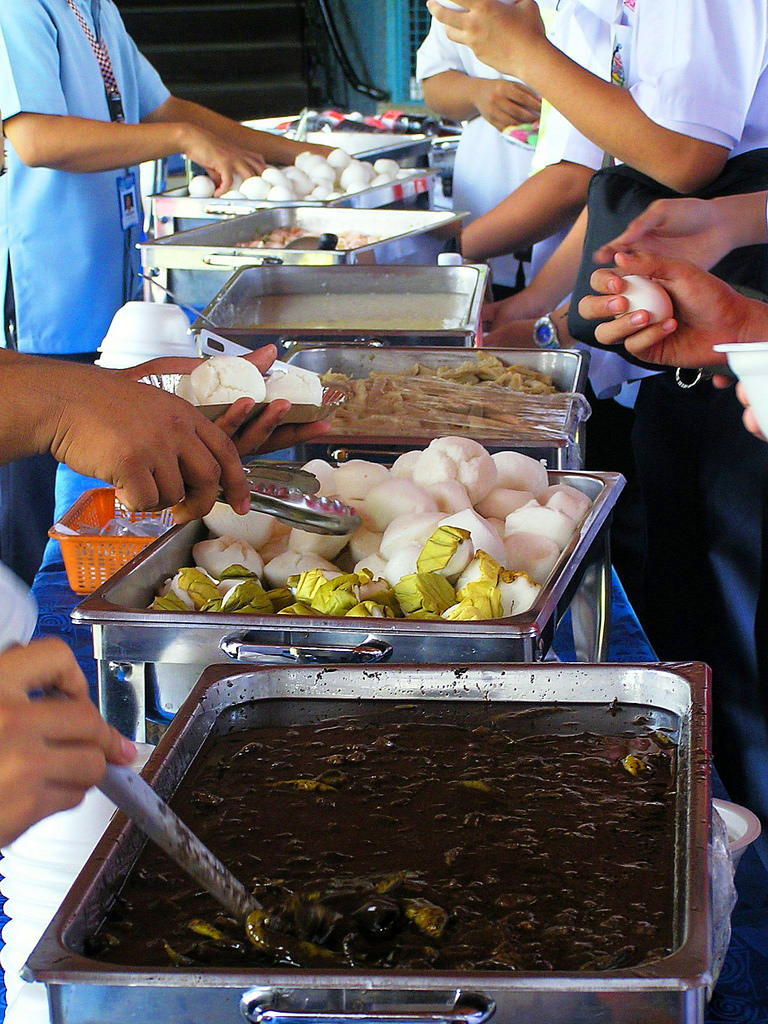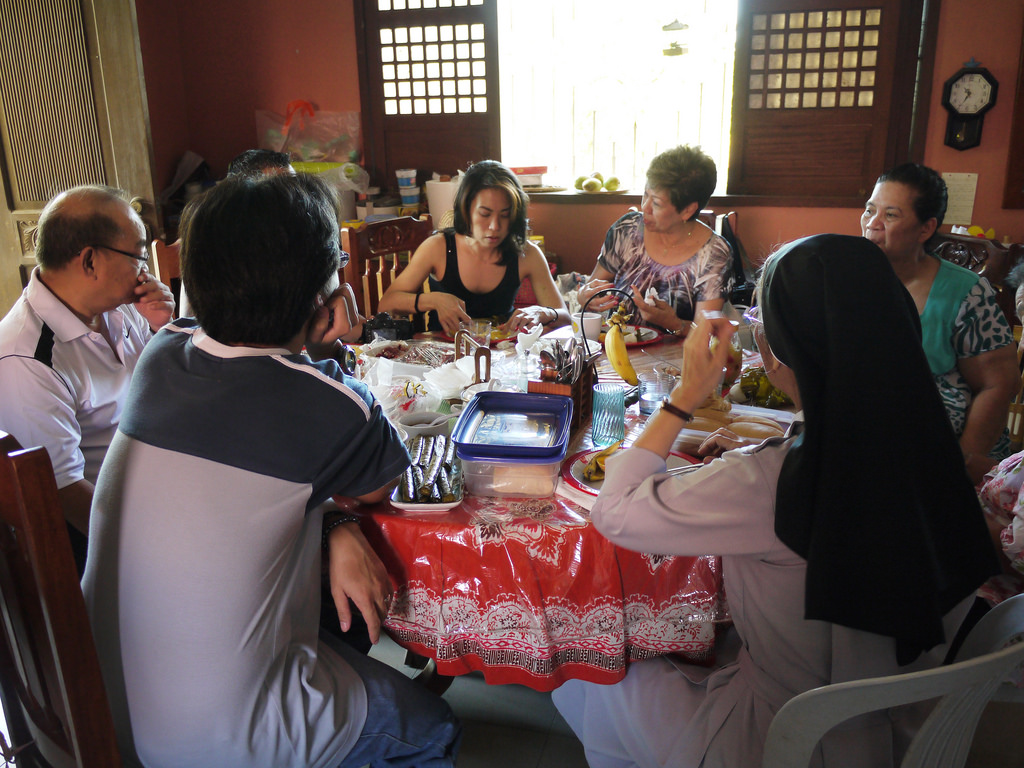Food and Drink: Daily Meals
Filipinos eat three meals per day, with two snacks called meriendas in the mid-morning and late afternoon.
Breakfast
Breakfast, agahan, is an important family meal and social time before the work or school day begins. It is a hearty meal typically consisting of fried rice with eggs (often made with leftover rice from dinner the night before), and sausage or fish. The food is accompanied by coffee, tea, or hot chocolate. Pastries such as ensaymada, a sweet, cheesy bread roll, are also popular. Breakfast is usually eaten around 6am, as most schools and workplaces begin around 7 or 7:30 am.
Lunch
Lunch (pananghalian) and dinner (hapunan) are interchangeable in terms of the kinds of dishes served, and are similarly sized, though lunch tends to be a bit larger. Lunch is eaten at noon, and Filipinos often take a long lunch break, not only to eat, but also to take a quick siesta (nap) to escape the height of the afternoon heat. Some shops close for this afternoon break, reopening around 2pm. Stews and stir-fries served with rice are common, especially in school and workplace cafeterias.
Dinner
Dinner is often eaten around 6 or 7 pm, though it is sometimes eaten, Spanish-style, around 9 or 10 pm, particularly if dining out.
Meriendas, or snacks, can be small or large, and any food can be eaten, with the exception of rice, which is only served at mealtimes. These informal snacks often consist of coffee or a piece of fresh fruit, but they can be heartier as well, with cakes and egg rolls typical for afternoon snacks.
Street Food and Restaurants
The Philippines has a thriving restaurant culture. Turo-turo restaurants are named “point-point” in Tagalog for the method of ordering: patrons simply point to the foods they would like, which are then quickly plated, heated, and served. Street food vendors, roadside cafes, food courts, upmarket restaurants, and increasingly, fast-food chains, serve everything from quick meals on-the-go to multi-course haute cuisine.
Cultural Influences
The Philippines is a large country with an ethnically diverse population and a long history of foreign influence, and there are several important regional cooking styles. Northern Luzon cuisine is heavy on seafood and makes use of boiling and steaming preparation methods, while the central region is known for its hearty, down-to-earth rice dishes, stir-fries, and liberal use of garlic. Bicolandia is famous for its Malaysian and Polynesian flair, including spicy chilies and coconut milk. Pork is a rarity on the largely Muslim island of Mindanao, where the cuisine is influenced by Indonesian ingredients such as peanuts, curries, and spicy chili. Commonalities in all Filipino cooking include a preference for a sour-cool flavor, which is achieved with ingredients like vinegar, fish sauce, and other fermenting agents such as kinilaw, palm sugar, tamarind, and cucumber.
Article written for World Trade Press by Carly K. Ottenbreit.
Copyright © 1993—2025 World Trade Press. All rights reserved.

 Philippines
Philippines 


